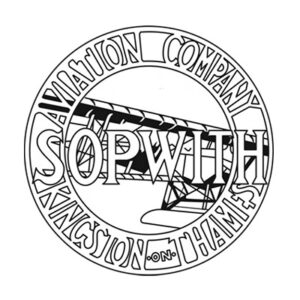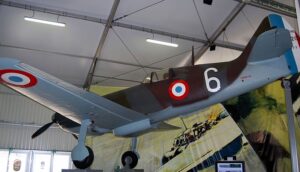Time Period: World War I
Country of Origin: United Kingdom
Type: Biplane, Fighter Aircraft
Manufacturer: Sopwith Aviation Company
Sopwith Pup Aircraft Overview
The Sopwith Pup was a British single-seat biplane fighter aircraft that saw service in World War I. It was designed and built by the Sopwith Aviation Company and was widely used by the Royal Flying Corps and Royal Naval Air Service during the war.
The Sopwith Pup was a single-engine biplane with a wooden structure and fabric covering. It was powered by an 80-horsepower Le Rhône rotary engine and had a top speed of around 112 miles per hour (180 kilometers per hour). The aircraft was armed with a single Vickers machine gun mounted on the fuselage, which fired through the propeller arc.
The Sopwith Pup was notable for its excellent maneuverability and handling, which made it a popular choice among pilots. It was also known for its ease of maintenance, which made it popular with ground crews. The Pup’s wing design and lightweight construction made it highly maneuverable in the air, and it was often used for aerial reconnaissance, fighter patrols, and ground attack missions.
The Sopwith Pup first entered service with the Royal Naval Air Service in late 1916 and quickly proved to be a successful design. It was used extensively in the Western Front, where it was able to hold its own against German fighters, and it was also used for naval operations, including defending ships from attack.
Overall, the Sopwith Pup was an important aircraft in the development of fighter aircraft technology during World War I. Its success and popularity helped establish the importance of lightweight construction, maneuverability, and ease of maintenance in aircraft design. Despite its relatively low engine power and armament, it was able to perform effectively in a wide range of missions, and it played an important role in the early years of military aviation.
Sopwith Pup (80 hp Le Rhône) Specifications
- Crew: 1
- Length: 19 ft 3.75 in (5.8865 m)
- Wingspan: 26 ft 6 in (8.08 m)
- Height: 9 ft 5 in (2.87 m)
- Wing area: 254 sq ft (23.6 m2)
- Empty weight: 787 lb (357 kg)
- Gross weight: 1,225 lb (556 kg)
- Powerplant: 1 × Le Rhône 9C 9-cylinder air-cooled rotary piston engine, 80 hp (60 kW)
- Propellers: 2-bladed wooden fixed-pitch propeller.
Sopwith Pup (80 hp Le Rhône) Performance
- Maximum speed: 112 mph (180 km/h, 97 kn)
- Range: 337 mi (542 km, 293 nmi)
- Endurance: 3 hours
- Service ceiling: 17,500 ft (5,300 m)
- Time to altitude: 10,000 ft (3,048 m) in 14 minutes, 16,100 ft (4,907 m) in 35 minutes.
- Wing loading: 4.8 lb/sq ft (23 kg/m2)
- Power/mass: 0.0654 hp/lb (0.1075 kW/kg)
Sopwith Pup (80 hp Le Rhône) Armament
- Guns: 1 × .303 in (7.7 mm) Vickers machine gun fired forward through the propeller by means of a Sopwith-Kauper gun synchronizer.










